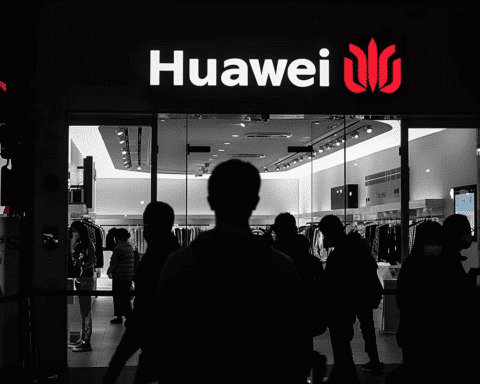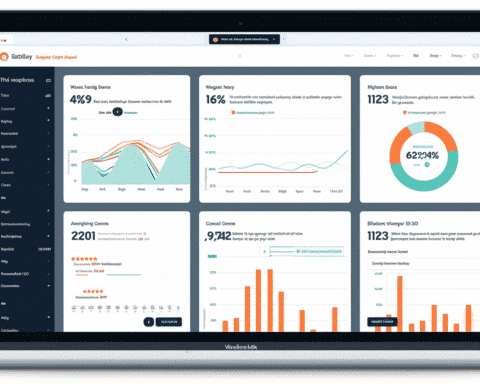AT&T, the telecommunications titan, presents an attractive dividend yield, but there’s a worrisome aspect in one crucial performance metric. With its rich dividend offering a nearly 7% yield at current stock prices, AT&T (NYSE: T) is a tempting proposition for those seeking income investments. Despite this attractive yield and the company’s stature as one of America’s largest telecommunications providers, AT&T is a challenging investment to appraise.
Some years ago, a spate of expensive acquisitions in the entertainment sector burdened the company with an enormous debt load. AT&T’s Chief Financial Officer, Pascal Desroches, also reported that the company is making “unprecedented levels of investments in 5G and fibre” to enhance its networks. This high debt and substantial capital investment combination could place AT&T on shaky financial grounds. However, 2023’s first quarter results reveal encouraging trends and a note of caution.
Positive aspect: Growth of AT&T’s customer base Apart from its attractive dividend yield, the impressive customer growth under CEO John Stankey, who took the helm in 2020, makes AT&T an enticing stock. The first quarter of 2023 saw AT&T record 424,000 postpaid phone net additions – the most valued customer segment in the telecom industry.
AT&T now saw over 400,000 postpaid phone net additions for 11 straight quarters, a marked increase from the average of 121,000 net additions per quarter before Stankey’s leadership in 2019.
This growth is particularly notable given the fiercely competitive U.S. telecom market. With 97% of U.S. adults owning a mobile phone, AT&T’s growth largely depends on attracting customers from competitors. The consistent growth of its postpaid phone segment suggests it has been successful in this strategy, a trend that has continued into 2023.
AT&T’s mobile division saw its revenue increase 2.5% year over year in Q1 to $20.6 billion, contributing to a 1.4% rise in total revenue to $30.1 billion.
Negative aspect: AT&T’s Free Cash Flow While AT&T has excelled in customer acquisition and revenue growth, its Q1 free cash flow (FCF) amounted to $1 billion, significantly below its Q1 2022 and Q1 2021 figures of $2.8 billion and $4 billion, respectively. This reduction is alarming because FCF indicates a company’s ability to fund its dividend.
Adding to the concern, AT&T lowered its full-year FCF prediction from $16 billion to $14 billion in Q2 2022, indicating a possible similar reduction in 2023. This is one of the reasons why its shares are close to their 52-week low.
Building out 5G and fibre optic networks is both costly and time-intensive. To tackle these challenges, AT&T partnered with BlackRock in a joint venture on May 11 to fund and expedite its fibre rollout in more U.S. cities. Despite these efforts, fibre still represents only a tiny percentage of AT&T’s overall sales, contributing $1.5 billion of the company’s $30.1 billion in Q1 revenue.
The focal point for AT&T Even though Q1 saw a drop in free cash flow, AT&T’s management affirmed its $16 billion FCF goal for 2023. Stankey acknowledged the increase in capital investments over the previous year, resulting in a dip in FCF, but promised these investments would stabilize throughout the remainder of 2023, allowing the company to meet its FCF target.
Furthermore, the company’s 2023 forecast predicted a minimum of 4% growth in wireless service revenue. AT&T saw a 5.2% year-over-year rise in Q1, thanks to its customer growth, suggesting a promising start.
However, AT&T’s management also mentioned macroeconomic circumstances affecting customer spending, leading some to delay upgrading their older smartphones. As a result, Stankey reported a reduction in traditional upgrade and shopping rates.
Depending on how macroeconomic conditions evolve during 2023, AT&T might have to revise its free-cash-flow projection downward as it did in 2022. This could impact AT&T’s ability to decrease its debt, a key objective for 2023, and sustain its dividend.
Therefore, the red flag related to free cash flow must be addressed now. Investors should refrain from buying AT&T shares until its Q2 results clarify whether the company is on track to meet its 2023 FCF goal. Alternatively, investors might consider other high-yield dividend stocks.
AT&T presents a paradox for investors. On one side, it boasts strong customer growth and an attractive dividend yield. On the other, it carries a heavy debt burden and faces uncertainty around its free cash flow projection. Investors need to weigh these opposing elements before taking a position. The upcoming Q2 results will clarify AT&T’s financial standing and might alter the risk-reward balance for potential investors. Until then, exploring other high-yield dividend options might be a wise choice.




